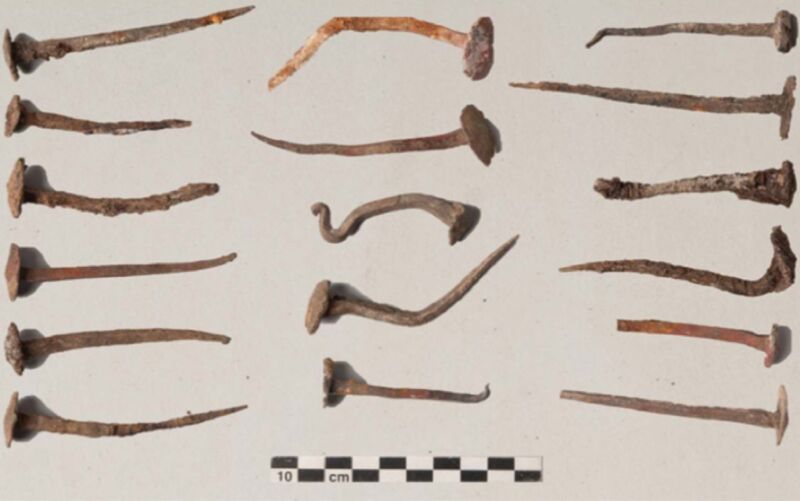Bent nails at Roman burial site form “magical barrier” to keep dead from rising

Enlarge / Bent nails scattered around early Roman imperial burial site suggest an attempt to keep the deceased from rising. (credit: Sagalassos Archaeological Research Project)
Archaeologists excavating an early Roman imperial tomb in Turkey have uncovered evidence of unusual funerary practices. Instead of the typical method of being cremated on a funeral pyre and the remains relocated to a final resting place, these burnt remains had been left in place and covered in brick tiles and a layer of lime. Finally, several dozen bent and twisted nails, some with the heads pinched off, had been scattered around the burn site. The archaeologists suggest that this is evidence of magical thinking, specifically an attempt to prevent the deceased from rising from the grave to haunt the living, according to a recent paper published in the journal Antiquity.
Perhaps the best known examples of this kind of superstitious funerary practice are the so-called "vampire" burials that occasionally pop up at archaeological sites around the world. In the early 1990s, children playing in Connecticut stumbled upon the 19th-century remains of a middle-aged man identified only by the initials "JB55," spelled out in brass tacks on his coffin. His skull and femurs were neatly arranged in the shape of a skull and crossbones, leading archaeologists to conclude that the man had been a suspected "vampire" by his community. They have since found a likely identification for JB55 and reconstructed what the man may have looked like.
In 2018, archaeologists discovered the skeleton of a 10-year-old child at an ancient Roman site in Italy with a rock carefully placed in its mouth. This suggests those who buried the child-who probably died of malaria during a deadly 5th-century outbreak-feared it might rise from the dead and spread the disease to those who survived. Locals are calling it the "Vampire of Lugnano." And last year, archaeologists uncovered an unusual example of people using these tips in a 17th-century Polish cemetery near Bydgoszcz: a female skeleton buried with a sickle placed across her neck, as well as a padlock on the big toe of her left foot.